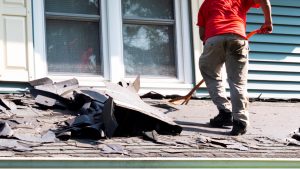A permit is required to build a deck, so check with your contractor about obtaining one. You may also want to talk to a building engineer to ensure that the deck will be safe and strong.

A lot of attention must be paid to the mana curve. Aggressive decks will try to stay around 2-3 cost, while control decks will go up higher. Contact Deck Builders Lexington KY for professional help.
When building a deck, it is important to keep in mind that the structure must be capable of supporting the weight of people and furnishings. It is also important to follow all building codes and permit requirements. To help ensure that your deck will be safe and secure, make sure to use the proper materials for construction.
Post and beam construction is a popular style of building that incorporates a combination of structural durability and aesthetic beauty. The exposed wooden beams of this style create a unique and timeless look that adds value to any property. Additionally, post and beam buildings can be designed with open floor plans that allow for large expanses of glass, bringing the indoors to the outdoors and creating a seamless transition between indoor and outdoor spaces.
Unlike traditional timber framing, which uses hand-hewn or sawn beams, post and beam structures utilize milled or glued boards that are usually surfaced for appearance. These techniques offer builders the ability to produce complex trusses and open designs that cannot be achieved with a sawn beam. Additionally, post and beam building systems typically require fewer support beams than timber frame buildings, which allows for greater interior flexibility.
These open interiors and flexible design features are some of the key reasons that post and beam construction is becoming a popular choice for modern homes and other structures. Another benefit is the ability to achieve a high degree of energy efficiency with the open layouts and insulated walls. Post and beam structures are often constructed with a monolithic concrete slab foundation, which can be more cost effective than other types of footings. Additionally, the use of a concrete slab foundation can score the building LEED points and help prevent an issue known as frost heave, which can damage or even detach piers from the ground.
Lastly, post and beam construction is an excellent option for buildings with a rustic or historical feel. Its historic roots date back thousands of years, and the enduring popularity of this type of construction can be attributed to its inherent strength and functionality. The lack of load-bearing walls can make for a more spacious floor plan and open design, while the use of reclaimed or sustainable wood can contribute to a greener building.
Joists
Joists are the main structural components that form the deck frame. They carry the weight of the deck and can be made from wood, metal or a composite material. Typically, pressure treated lumber is used for joists, as it is more affordable and will hold up well to general wear and tear. However, if the deck is going to be used for heavy foot traffic or support a hot tub, then stronger material should be considered.
For a simple deck, 2x6s or 2x8s will suffice for joists. However, if the deck is larger or will be supporting heavier loads then it may require 2x10s. In this case, it is a good idea to get a building permit so that you can be sure that you are adhering to the local code requirements for joist spacing and materials.
If you are going to use a joist that requires blocking, make sure you build in that extra cost as it will help ensure your deck is safe and built to last. Blocking is short pieces of lumber that are installed between joists to prevent them from twisting under load. It is also important to cover all butt joints with a waterproof tape. This will keep damaging moisture from penetrating into the deck and causing damage.
Lastly, make sure you install the proper bracing to help keep your deck from buckling under load. This is especially important for taller decks, or if the deck is being built over a slope. In some cases, you may be able to save money by using composite joists instead of wood. These are manufactured open-web steel joists that can be much lighter in weight than traditional wood joists. They are also engineered to withstand construction loading and full-design loads when installed in concrete slabs.
It is recommended to cover any bearing surfaces of the joists with waterproof tape, as this will prevent water, mold and mildew from forming. It is also a good idea to use galvanized nails when installing joists, as these will be more durable than standard nails.
Railing
When building a deck, proper railings are a must. They provide safety and a finishing touch to your structure. They also need to be properly sized and spaced to meet code requirements. Homeowners can choose from a wide variety of railing styles and materials to suit their style preferences and performance needs. Manufactured composite and PVC railings, metal railings and powder-coated aluminum railing systems are some of the options available for a safe and attractive deck. TimberTech Advanced PVC and Composite railings, for example, offer a low-maintenance design with customizable features. Other choices include steel or wire cable railings that add a contemporary look to the deck and are code-compliant. The gap between balusters and the bottom rail must not exceed 4 inches to ensure safety.
One of the first steps in deck building is obtaining a permit from local building codes. This is necessary to ensure that the structure complies with regulations regarding where the deck can be located, how big it can be and whether it must be attached to the house or set free-standing. This will help you save time and money in construction by ensuring that the deck is structurally sound, and will keep you from having to tear down sections later on.
Once you have your permits, the next step is to construct the foundation for the deck. This may involve digging several feet below-grade to ensure a solid foundation that can support the weight of the deck and people walking on it. It’s important to use concrete blocks or poured piers, instead of wood, to reduce the risk of rot and other problems.
Then it’s time to begin constructing the deck itself. Depending on the size and design of the deck, you might need to purchase a large number of lumber pieces for the frame. In addition, you’ll need to have a contractor pour the footings and install the joists.
Once the joists are installed, you can begin installing the railings. Start by determining how high you want the railings to be. To do this, measure the distance between the posts and mark it on the deck frame. Then use a level to make sure that the marks are straight and even. Once the posts are set, you can build the baluster assemblies between them. To do this, you’ll need two 2x4s that are the same length as the distance between the posts. Attach these to the posts with screws and then run a two-by-two baluster between them.
Decking
Decks are usually made of a mix of wood materials. Typically, Cosby says, pine and redwood are the most popular, but exotic hardwoods like ipe and cumaru are also used. Composite materials that look like real wood are also available. Regardless of the material, it must be treated or stained to resist moisture and pests.
The most visible components of a deck are the sheathing, posts and railings. The sheathing covers the joists and creates the walking surface of the deck. Posts are the vertical support structures that hold up the deck and its beams. They rest on concrete footings, which vary in size and depth depending on the deck’s size and location.
Footings also depend on the type of soil and climate zone where the deck is built. Heavier and larger decks require wider and deeper footings than lighter ones. The footings must extend below the frost line to prevent damage from freezing and thawing.
Stairs are usually built out of stair stringers and stair headers. A stair stringer is the long, rectangular, longitudinal beam that runs across a staircase; a stair header is the board that sits at the top of each joist on either side. To make stairs safe, a stringer should always be attached to the joist header and fastened with a safety bolt that is compatible with the manufacturer’s recommended hardware.
A deck should have a railing to keep people from falling off the structure, and the style of the railing can enhance the overall look of a deck. For example, milled balusters are a stylish option that go well with any architectural style and come in a variety of species. You can also add decorative post caps and finials, which come in various configurations to complement any deck design.

